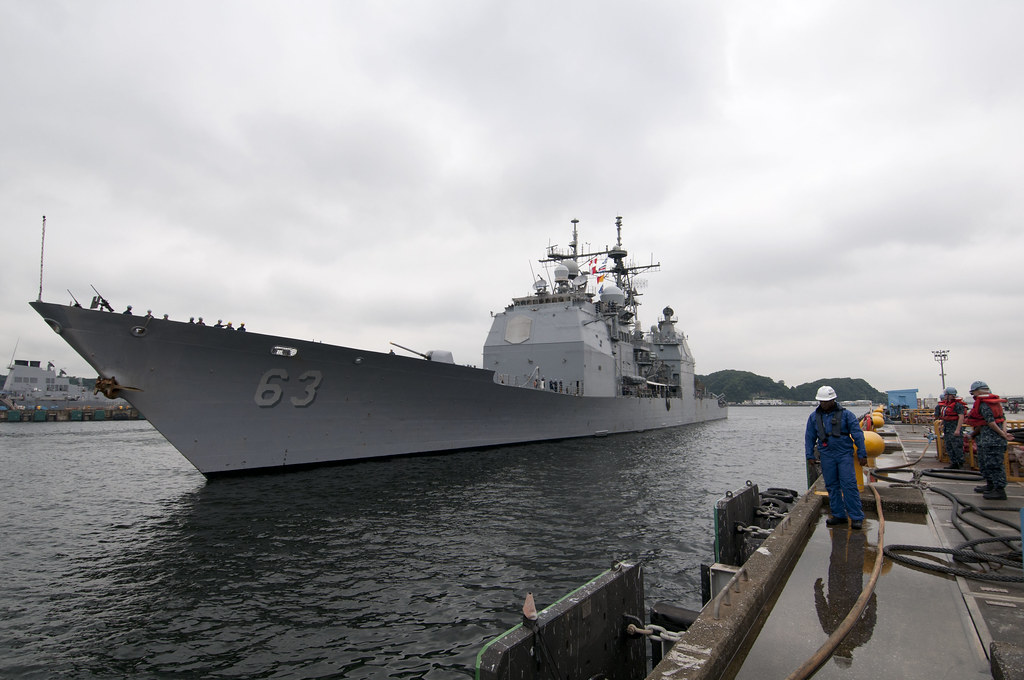 |
| USS Cowpens (Image: US Navy via Flickr) |
By Robert Farley
The incident stems in part from a desire in China to push back against the United States.
Unsurprisingly, interpretations of the recent “Cowpens Incident,” in which a PLAN amphib swung across the bow of the cruiser USS Cowpens, have varied dramatically. Nevertheless, most analysts seem to agree that the incident stems in part from a desire in China to push back against the United States, especially in contexts where the PLAN cannot reply to the USN in kind. No Chinese submarines or surface ships, for example, can monitor a new U.S. carrier during the process of undergoing trials. Such games were common in the Cold War, as the Soviet Navy and the USN took a long time to sort through precisely what the rules were, what it meant to bend a rule, and what happened when the rules broke. However, the current situation is a good deal more complex; the PLAN may find that it needs to “push back” against not only the United States, but also India, Japan, Russia, Vietnam, and a handful of other Southeast Asian nations.
The Cold War surely presented its own version of a tense, complex maritime environment, but at least in that case good alliance relations between most of the major navies on either side meant that informal rules of the road could be applied with some confidence. A Russian SSN playing tag with a French, British, or U.S. nuclear submarine had at least some sense that the other side shared a common purpose, if not always particular tactics. The current situation in East Asia is considerably different. As regional powers seek to increase their naval strength, an ever more complex maritime space develops. Sometimes, the increase in complexity does not even require the deployment of a larger number of ships; the “defensive zone” of the Liaoning is necessarily a relatively new concept for the PLAN. But in less than a decade, each of South Korea, Japan, Australia, India, the United States, and China may be operating carrier/amphib battle groups in rough proximity to one another. A shared understanding of the rules is important both to those who wish to live within them and those who want to test them, and the multiplicity of actors in Western Pacific makes coming to such an understanding exceptionally difficult.
Read the full story at The Diplomat

 Logging you in...
Logging you in...